
SRHS
Steamboat Rock Historical Society
TIMES ARE CHANGING
THE RAILROAD
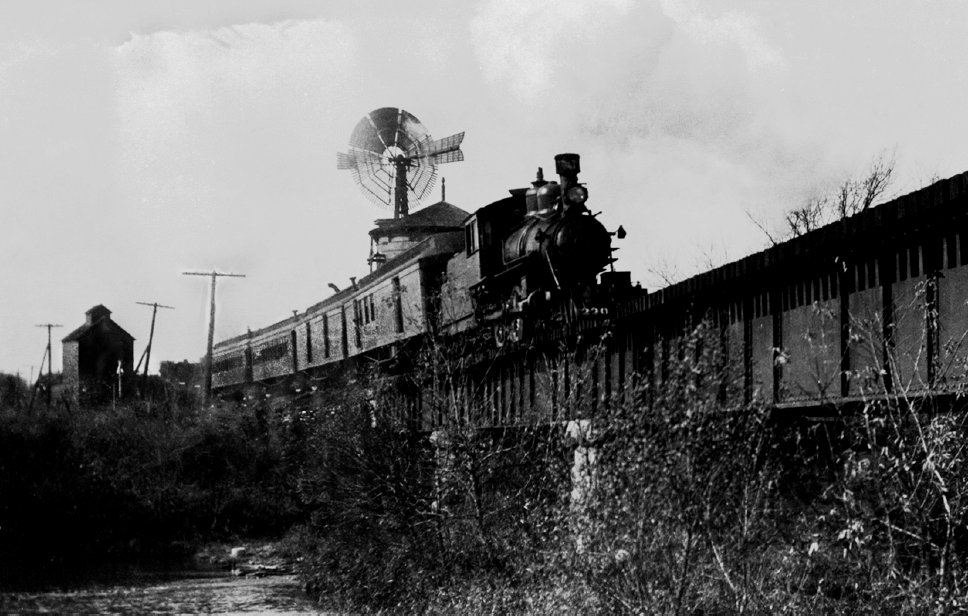
Scarcely had our town come into existence when in 1856 a bill was passed in Congress providing land grants to finance four railways across Iowa from the Mississippi to the Missouri. There was already a formidable network of lines east of the Mississippi, that had been fostered by land grants in the state of Illinois. The principal was extended to Iowa, and ultimately to all of the western states.
Even before the land grant act there had been some talk with respect to railroads in Iowa, but because of sparse population and scarce capital only a little action had been taken. A start had been made in Davenport with a line toward Iowa City. It was started as soon as the line from Chicago to Rock Island had been completed in 1853. By 1856 trains were running into Iowa City, and along a spur to Muscatine. There was also a line built connecting Keokuk and Dubuque, and in 1857 it was extended to Fort Madison.
The acceptance of the land grants by the Iowa Legislature established a general pattern of railroad building in Iowa. By 1857, five lines were probing into the state in the direction of central Iowa. It is confusing to try to sort out all the names of companies that were original beneficiaries of the grants, since they all were operated on a shoestring and mismanagement was not uncommon. When everything finally straightened out names that are still well recalled today emerged to provide service to Iowa. The Illinois Central, North Western, Rock Island, and Burlington were a few of the better known.
The North Western crossed the state to Council Bluffs, on February 8, 1867, winning the great railroad race across Iowa. The prize was the very profitable tie-up with the Union Pacific, and link to the west
coast lines. The North Western retained their advantage for some 80 years as one of the Midwest’s most viable lines.
The Iowa Central Railroad was one name in a series of names brought on by mergers and reorganizations of a small rail line built through Steamboat Rock in the late 1860’s. It was the first truly north and south rail connection through Iowa, and gave an outlet to St. Louis, Missouri and Peoria, Illinois, as well as the great lumbering districts of the north. Minnesota needed Iowa’s coal and Iowa needed
Minnesota’s lumber.
There is nothing in previous history that brought about more development in this
country than the railroad, the printing press and the telegraph. Little change in the way of doing things came about from earliest times until these three items came on the scene.
The railroads were just getting a good start, pushing west of Chicago, when the Civil War postponed their growth. The Dubuque and Pacific Railroad was completed to Cedar Falls in 1857 when an economic panic halted operations. Work finally commenced after the war and the Dubuque & Sioux City Railroad (now
CC&P, earlier the Illinois Central Railroad) came to Ackley, Iowa Falls and Alden in 1866.
It was during this time that the railroad was a real growth industry. As main lines pushed across the states, local groups built feeder lines to connect their town to them.
There were a number of coal mines at Eldora and Steamboat Rock and in order to create an outlet for them the Eldora and Steamboat Rock Coal Company, was begun. This company subsequently led to the
organization of the Eldora Railroad and Coal Company who’s objective was the building of a railroad between Eldora and Ackley connecting Eldora with an eastern outlet over the Illinois Central lines. The
company had no aspirations of greatness as far as railroading was concerned, they simply wanted to sell their coal.
In January, 1866, an organizational meeting was held in Dubuque and five directors were elected by the stockholders: C.C. Gilman, H. G. Hetherington, S. F. Lathrop, H. L. Huff and W. J. Moir. C. C. Gilman was elected president and James McKinley, secretary pro tem. On February 7, 1866 the Eldora Railroad and Coal Company officially came into being.
Charles Gilman was able to secure some eastern interests with capital to invest.
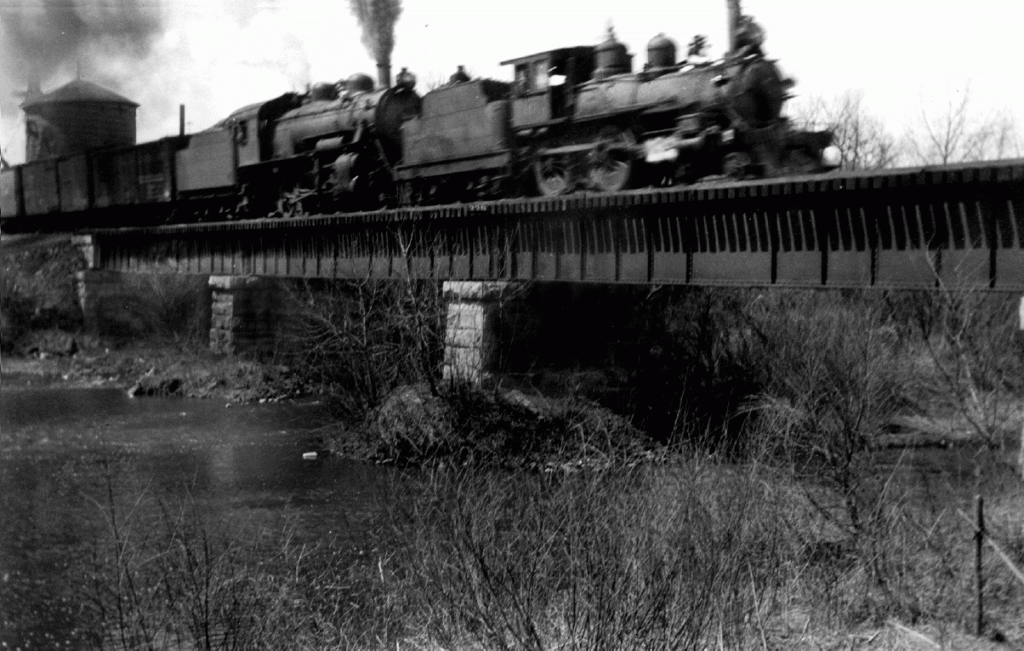
They planned to build the railroad from Eldora to Ackley to sell and deliver Eldora’s coal to the Dubuque & Sioux City Railroad which went through Ackley.
The interests of the coal company were merged into the newly formed corporation, which took all the lands and
mineral rights on condition that the road would be built from Eldora to Ackley.
Surveying the road bed through the Iowa River valley was a big job, and a very expensive one. A number of years later they surveyed a new route for the railroad north of Steamboat, with a high bridge across the river to avoid the hills and curves down to the river and back up, but, these plans never materialized. The hills and curves
through Steamboat Rock remained a very difficult stretch of track.
In 1867 rail construction was begun at Ackley, and the bridge across the Iowa River at Steamboat was nearly completed. Train travel between Steamboat Rock and Ackley was planned for March of 1868, and by April cars of the “Plug” as it was derisively called, were making regular trips with potatoes, corn, and coal. The rail head
and depot were nearly finished in Steamboat Rock.
The premiere locomotive was the Vixen , a light draft engine was given to sparking considerably. Another engine, passenger cars and other needed rolling stock were soon added.
Early in the summer of 1868, two regularly scheduled trains were being run between Steamboat Rock and Ackley making connections with D&SC trains. Returning to Steamboat Rock these trains connected with stages bound for Eldora, Xenia (Secor), Albion, and Marshalltown.
Later in the summer of 1868 the line was completed to Eldora. The last spike driven in July of that year linking
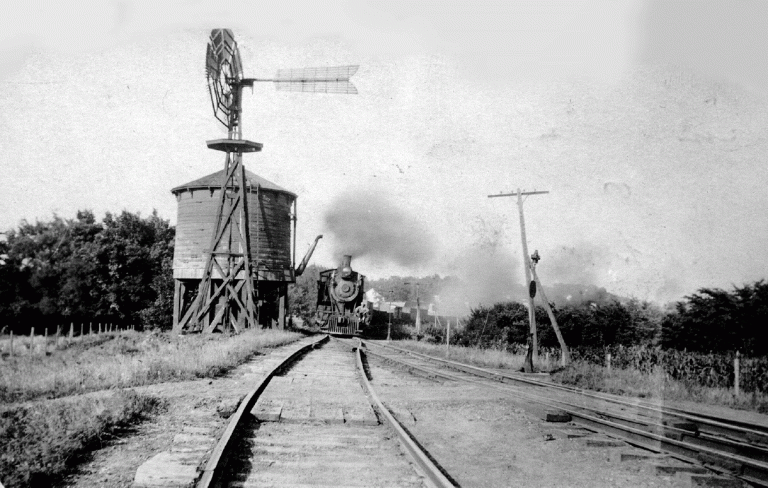
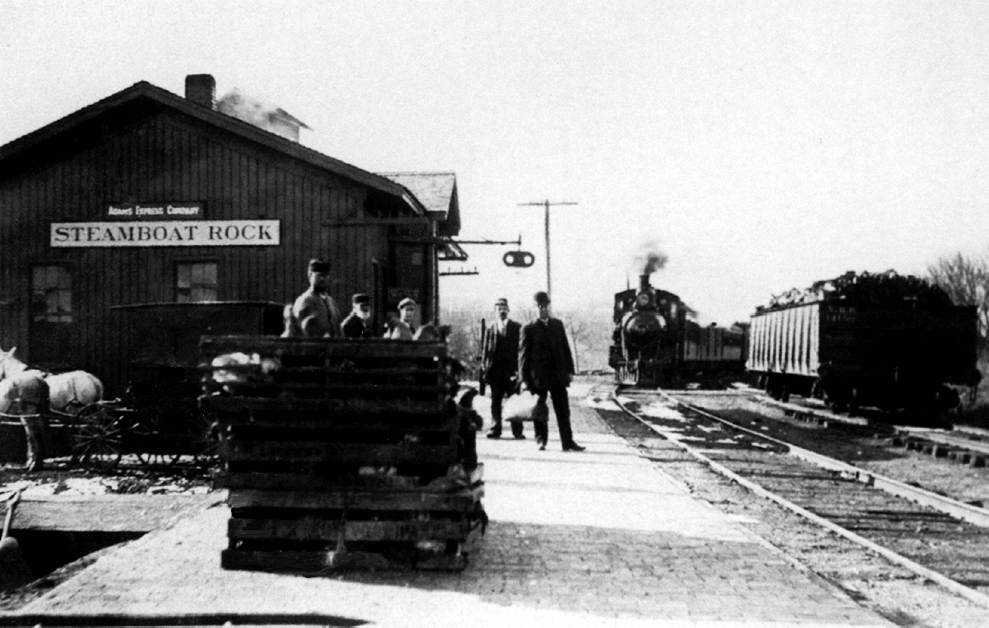
Eldora and Steamboat Rock with the outside world of trade and commerce. The line was only seventeen miles long, but it connected with the great eastern outlets and was looked upon as the beginning that would soon be
extended farther north and south. The railroads went on to write their own interesting history. The coal business
never really materialized but the railroad was built.
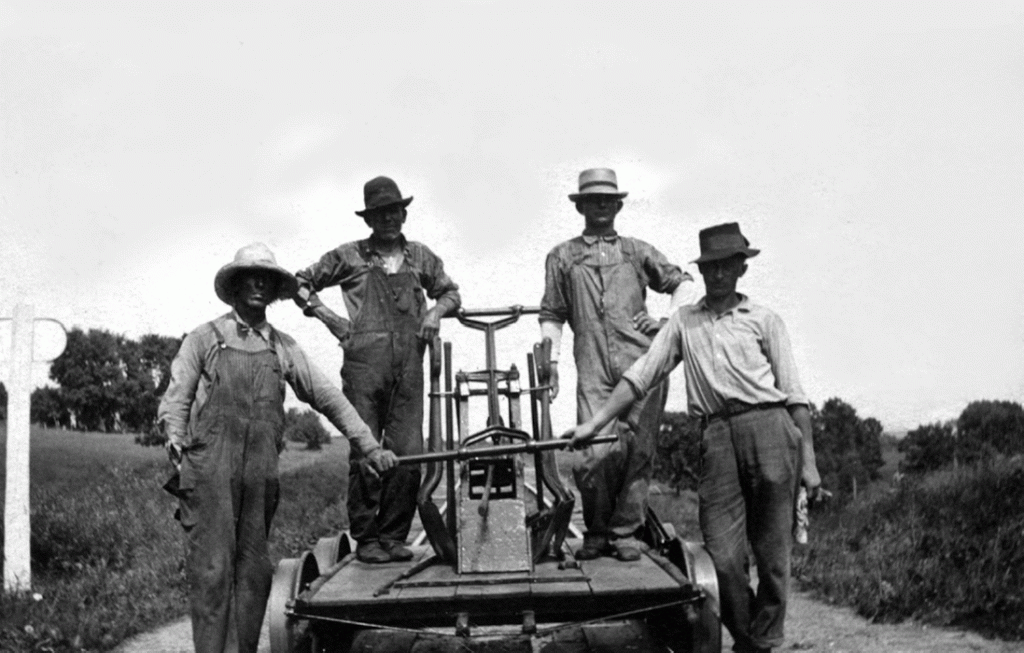
Section men (above and top right) kept tracks in top shape and were paid $5 per month more. The tracks here were treacherous.
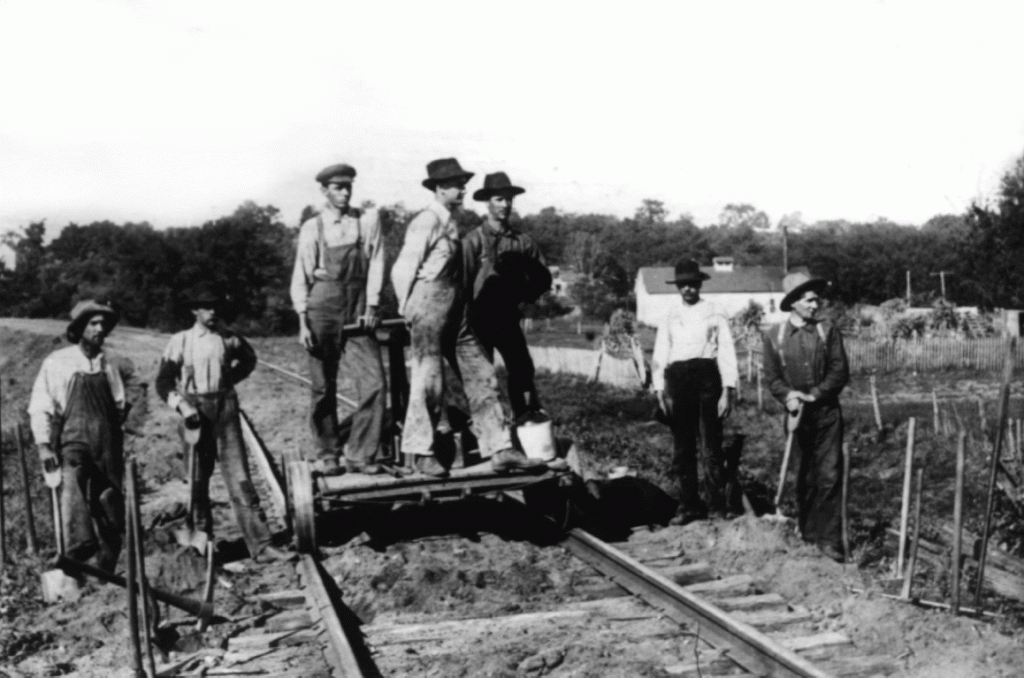
Section men working on the tracks on the south side of Steamboat Rock. Note the creamery in the background.
It was necessary to keep the tracks in tip top shape in the area due to their treachery. For years the railway company paid $5 per month more to the section men at Steamboat Rock for that very reason.
The Eldora Railroad and Coal Co. didn’t last out the year. On September 1, 1868, a sweeping change in management took place when the line was sold to the Iowa River Railway Company. Charles Gillman headed the purchasing company, and well as the old company, but most of the other executives were new.
The Iowa River Railroad Company started to build south to connect with the Chicago & North Western at Marshalltown, when the former was taken over by the Central Railroad Company of Iowa on September 30, 1869. By the end of the year the rails had been completed to Marshalltown.
The annual report of 1871 showed Charles Carroll Gilman as president and general superintendent; J. W. Gilman as local treasurer and general passenger agent; and John S. Gilman as director.
Charles Gillman was now at the helm of the Central Railroad Company of Iowa and was able to survey and build the line through central Iowa virtually from one border of the state to the other.
By the beginning of 1872 the entire road, from Northwood at the northern border of the state to Albia near the IowaMissouri line, was open to traffic.
According to the Eldora Herald of December 16, 1874, a collision occurred on the Central Railroad of Iowa, south of Steamboat Rock the day before on December 15.
© 2020 Steamboat Rock Historical Society | All Rights Reserved
Powered by Hawth Productions, LLC